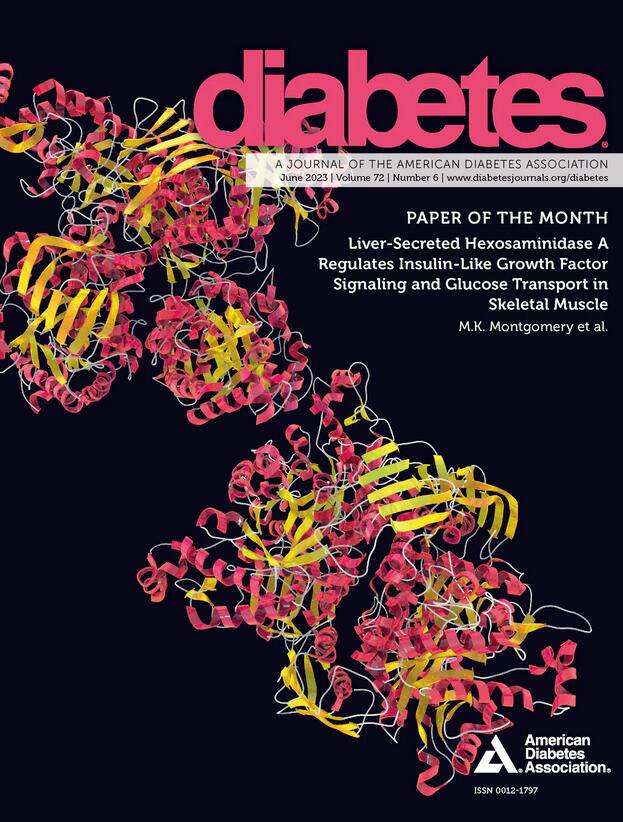替西肽初始和持续血糖和体重反应的预测因素:一项事后分析
IF 7.5
1区 医学
Q1 ENDOCRINOLOGY & METABOLISM
引用次数: 0
摘要
这项事后分析评估了替西肽对2型糖尿病患者降低糖化血红蛋白(HbA1c)和体重的可持续性,并增加了心血管风险。在52周时达到HbA1c≤48 mmol/mol(6.5%)或体重减轻≥10%的参与者进行持续血糖或体重控制以及初始和持续疗效的预测指标评估。替西肽治疗的受试者在52周时HbA1c≤48 mmol/mol(6.5%), 75-84%的患者持续到研究结束(中位81周)。预测成功的因素包括较高的替西帕肽剂量、较短的糖尿病病程、较低的HbA1c、较高的β细胞功能HOMA (HOMA- b)、单用二甲双胍和基线时无蛋白尿。预测持续血糖控制的因素是52周时体重减轻更大、空腹血糖下降更小、无磺脲类药物和更高的HOMA-B。在52周体重减轻≥10%的参与者中,79-82%的人保持了体重减轻。预测成功的因素是较高的替西帕肽剂量、女性、无心血管疾病史、较低的基线HbA1c、估计的肾小球滤过率和甘油三酯。低密度脂蛋白胆固醇下降到52周预示着持续的体重减轻。在这项事后分析中,替西肽获得的更大的体重减轻和更好的β细胞功能是持续血糖控制的主要预测因素;没有发现有临床意义的持续体重控制预测因子。我们的目的是在事后分析中探讨替西肽降低糖化血红蛋白(HbA1c)和体重的可持续性。我们想要回答的问题是,在一项研究中,在心血管风险增加的2型糖尿病患者中,每周1次的替泽帕肽(LY3298176)与每天1次的甘精胰岛素(surpass4)相比,如何预测HbA1c和体重降低的实现和维持。我们发现更大的体重减轻和β细胞功能改善是替西肽治疗持续血糖控制的主要预测因素。没有发现与持续体重减轻相关的临床预测因子。简单的临床测量可以预测替西肽初始和持续的血糖控制和初始体重减轻。本文章由计算机程序翻译,如有差异,请以英文原文为准。
Predictors of Initial and Sustained Glycemic and Weight Response to Tirzepatide: A Post Hoc Analysis of SURPASS-4
This post hoc analysis assessed sustainability of lowered glycated hemoglobin (HbA1c) and weight with tirzepatide in people with type 2 diabetes and increased cardiovascular risk. Participants achieving HbA1c ≤48 mmol/mol (6.5%) or weight loss ≥10% at 52 weeks were evaluated for sustained glycemic or weight control and predictors of initial and sustained efficacy. For tirzepatide-treated participants achieving HbA1c ≤48 mmol/mol (6.5%) at 52 weeks, 75–84% sustained this until study end (median 81 weeks). Factors predicting achievement were higher tirzepatide dose, shorter diabetes duration, and lower HbA1c, higher HOMA of β-cell function (HOMA-B), metformin alone, and absence of albuminuria at baseline. Factors predicting sustained glycemic control were greater weight loss, smaller fasting glucose decrease, no sulfonylurea, and higher HOMA-B at 52 weeks. For participants achieving ≥10% weight loss at 52 weeks, 79–82% maintained weight loss. Factors predicting achievement were higher tirzepatide dose, female sex, no cardiovascular disease history, and lower baseline HbA1c, estimated glomerular filtration rate, and triglycerides. Greater decrease in LDL-cholesterol to 52 weeks predicted maintained weight loss. Greater weight loss and better β-cell function achieved with tirzepatide were the main predictors for sustained glycemic control in this post hoc analysis; no clinically meaningful predictor was identified for sustained weight control. Article Highlights We aimed to explore sustainability of lowered glycated hemoglobin (HbA1c) and weight with tirzepatide in a post hoc analysis. The question we wanted to answer was what predicted achieving and sustaining HbA1c and weight reduction in A Study of Tirzepatide (LY3298176) Once a Week Versus Insulin Glargine Once a Day in Participants With Type 2 Diabetes and Increased Cardiovascular Risk (SURPASS-4). We found greater weight loss and improved β-cell function were the main predictors for sustained glycemic control with tirzepatide therapy. No clinically relevant predictor was identified for sustained weight loss. Simple clinical measures may predict initial and sustained glycemic control and initial weight loss with tirzepatide.
求助全文
通过发布文献求助,成功后即可免费获取论文全文。
去求助
来源期刊

Diabetes
医学-内分泌学与代谢
CiteScore
12.50
自引率
2.60%
发文量
1968
审稿时长
1 months
期刊介绍:
Diabetes is a scientific journal that publishes original research exploring the physiological and pathophysiological aspects of diabetes mellitus. We encourage submissions of manuscripts pertaining to laboratory, animal, or human research, covering a wide range of topics. Our primary focus is on investigative reports investigating various aspects such as the development and progression of diabetes, along with its associated complications. We also welcome studies delving into normal and pathological pancreatic islet function and intermediary metabolism, as well as exploring the mechanisms of drug and hormone action from a pharmacological perspective. Additionally, we encourage submissions that delve into the biochemical and molecular aspects of both normal and abnormal biological processes.
However, it is important to note that we do not publish studies relating to diabetes education or the application of accepted therapeutic and diagnostic approaches to patients with diabetes mellitus. Our aim is to provide a platform for research that contributes to advancing our understanding of the underlying mechanisms and processes of diabetes.
 求助内容:
求助内容: 应助结果提醒方式:
应助结果提醒方式:


